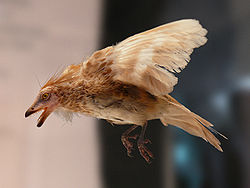Museo Nacional de Ciencias Naturales | |
 Museum's building | |
 | |
| Established | 1771 |
|---|---|
| Location | Madrid, Spain |
| Coordinates | 40°26′28″N3°41′25″W / 40.441036°N 3.690292°W |
| Type | Natural history museum |
| Visitors | 500,000 per year |
| Director | Rafael Zardoya |
| Website | www |
The National Museum of Natural Sciences (Spanish : Museo Nacional de Ciencias Naturales) is a natural history museum in Madrid, Spain. Dependent on the Ministry of Science, it is one of the National Museums of Spain, and it is managed by the Spanish National Research Council (CSIC).






